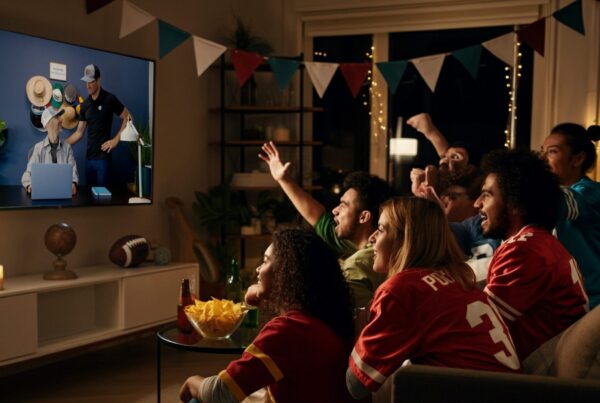Colors are a powerful tool in the world of graphic design, capable of evoking emotions, influencing decisions, and shaping brand identities. Working with a graphic design agency and understanding the psychology of color, businesses can make informed choices when designing logos, marketing materials, and product packaging, ultimately leading to increased brand recognition and sales. In this article, we’ll explore the importance of color in graphic design, how different colors can impact customer behavior, and how you can effectively utilize color psychology to grow your brand or business. And as a little inspiration, we’ll also share how a well-known business successfully leveraged the psychology of color in graphic design to increase sales. Let’s start there.
The Famous Golden Arches
Known for its iconic red and yellow logo, McDonald’s has long understood the impact that color can have on consumer behavior. And a graphic design fun fact, ads with a well-chosen color palette can increase brand recognition by up to 80%.
Red is often associated with feelings of excitement, passion, and urgency, which can stimulate appetite and motivate customers to make a purchase. Yellow, on the other hand, is a warm and friendly color that evokes happiness and optimism. By combining these two colors, McDonald’s creates an inviting atmosphere that encourages customers to visit and make purchases.
In the early 2000s, McDonald’s decided to refresh its brand image and store design. The company shifted towards using more natural materials, such as wood and stone, and introduced more green and earthy tones into its color palette. This new design, which aimed to create a more welcoming and relaxing atmosphere, was well-received by customers and contributed to a significant increase in sales.
In 2020, McDonald’s once again updated its packaging design, this time using bold, simple graphics and an emphasis on the iconic red and yellow color scheme. The new design was intended to create a sense of familiarity and consistency across all markets while still allowing for regional customization. This refreshed design further increased McDonald’s global brand recognition and contributed to a continued growth in sales.
These examples demonstrate how McDonald’s has strategically used the psychology of color in graphic design to create a strong brand identity and drive sales growth. By understanding the emotions and associations that colors can evoke, businesses can make informed choices about their branding and design elements to create a positive impact on consumer behavior.
Design Elements to Consider for Your Business:
1. The Science Behind Color Psychology
Color psychology is the study of how colors can affect human behavior and emotions. Various studies have shown that colors can influence our mood, perceptions, and decision-making processes. When it comes to branding and graphic design, color choice plays a crucial role in creating a memorable and effective brand identity that resonates with the target audience.
2. The Power of Colors in Digital Marketing
Colors play a significant role in digital marketing, as well. According to a study by the Pantone Color Institute, ads with a well-chosen color palette can increase brand recognition by up to 80%. Additionally, a study by the Institute for Color Research found that people make a subconscious judgment about a product within 90 seconds of initial viewing, and up to 90% of that assessment is based on color alone.
3. Understanding the Emotional Impact of Colors
Each color is associated with a unique set of emotions and connotations, making it essential to choose the right colors to communicate your brand’s message. Here’s a brief overview of the emotions and associations commonly linked to different colors:
- Red: excitement, passion, urgency, hunger
- Orange: energy, enthusiasm, creativity
- Yellow: happiness, optimism, warmth
- Green: nature, growth, balance, stability
- Blue: trust, reliability, professionalism
- Purple: luxury, royalty, creativity, wisdom
- Pink: compassion, love, playfulness
- Brown: earthy, natural, stability
- Black: sophistication, power, elegance
- White: purity, simplicity, cleanliness
4. Aligning Color Choices with Your Brand’s Identity
To effectively use color psychology in your branding and graphic design, it’s crucial to align your color choices with your brand’s identity and values. Start by considering your target audience, the emotions you want to evoke, and the message you want to communicate. Then, select colors that will help you achieve these goals.
For example, a luxury fashion brand might opt for a combination of black and gold to convey sophistication and elegance, while an eco-friendly company could choose green and brown to emphasize their commitment to sustainability.
5. Testing and Adapting
Don’t be afraid to test different color combinations and designs to see which ones resonate best with your target audience. Conduct market research, gather feedback, and analyze sales data to determine the effectiveness of your chosen colors. Remember, it’s essential to be adaptable and willing to change if you find that your current color choices aren’t working as well as you’d hoped.
6. Consistency is Key
Consistency in your color choices across all branding elements is vital for creating a cohesive brand identity. This includes your logo, website, marketing materials, and product packaging. Consistent use of colors will help build brand recognition and make your brand more memorable in the minds of consumers.
Wrapping Up
Harnessing the power of color psychology in graphic design can significantly impact your
brand’s success and growth. By understanding the emotions and associations tied to different colors, aligning your color choices with your brand’s identity, and maintaining consistency across all branding elements, you can create a memorable and powerful brand that resonates with your target audience. Keep testing and adapting your color choices as needed, and watch your business flourish!













